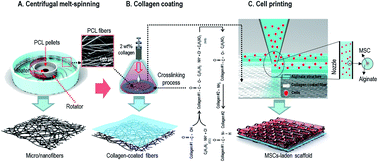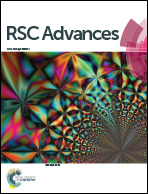A MSCs-laden polycaprolactone/collagen scaffold for bone tissue regeneration
Abstract
A mesenchymal stem cell (MSC)-laden scaffold was designed for use in mastoid obliteration. The scaffold consisted of polycaprolactone (PCL) micro/nanofibres, collagen, and cell-laden alginate struts, and was fabricated using a centrifugal melt-spinning, dip-coating, and bioprinting process. As a control, cell-free scaffolds containing the same material composition were used. Both scaffolds were assessed for their abilities to promote osteogenic activities after mastoid obliteration. In vivo mastoid obliteration was performed using guinea pigs that were divided into two groups: those for which the cell-laden scaffold was used and those for which the control scaffold was used. The results revealed that the cell-laden scaffold provided more rapid and broader osteogenesis than the control scaffold. Images obtained by micro-computed tomography and fluorescence microscopy showed that the acceleration of early new bone formation in the cell-laden scaffold was due to the release of osteogenic growth factors and stimulation of the migration and differentiation of host osteoprogenitors caused by MSCs.


 Please wait while we load your content...
Please wait while we load your content...